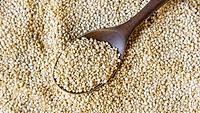Researchers Stress Importance of Monitoring Emerging Unregulated Mycotoxins in Food

Image credit: freestocks via Unsplash
A recent systematic review funded by the European Food Safety Authority (EFSA) has raised concerns with the presence of unregulated harmful mycotoxins in foods, finding a total of 15 unregulated mycotoxins in 38 different combinations across 19 food categories worldwide.
Mycotoxins are toxic secondary metabolites produced by fungi that are capable of contaminating a wide range of food commodities after crops are infected with fungi-producing toxins in the field, or during storage, transportation, or food processing. Mycotoxins are associated with health harms like immunosuppression, carcinogenesis, endocrine-disrupting activity, gastrointestinal disorders, and kidney damage. In Europe, the European Commission has established different maximum limits for mycotoxin exposure in adults and children through Regulation 915/2023. However, despite the existence of hundreds of mycotoxins, only a few are regulated in foods based on their widespread occurrence and known toxicological effects.
At present, regulated mycotoxins in the EU include aflatoxins, deoxynivalenol, fumonisins, ochratoxin A, zearalenone, and patulin. The European Commission has also proposed recommended levels for T-2 and HT-2 toxins in cereals and cereal-based products, and for alternariol, alternariol methyl ether, and tenuazonic acid in commodities like cereal-based foods for infants, legumes, and tree nuts.
However, non-regulated mycotoxins, often referred to as emerging mycotoxins, are increasingly prevalent in food and feed due to environmental factors associated with climate change, such as drought and high temperatures. Additionally, the findings of many in vitro studies indicate that most interactions between co-occurring mycotoxins lead to additive or synergistic toxic effects.
For the study, the researchers conducted a systematic review of literature published from January 2018–December 2022 on recent occurrence data for the most frequently found non-regulated mycotoxins that have already undergone a preliminary assessment by EFSA. The review focused on foods with the highest dietary exposure at the European level, such as cereals and cereal-based foods, oilseeds, nuts, fruits, vegetables, wine, sauces, coffees, legumes, beans, and potatoes, which were grouped into 19 categories. The study is the first attempt to quantify the occurrence and co-occurrence of the 15 emerging mycotoxins worldwide.
Most of the studies focused on the occurrence of non-regulated mycotoxins in grains and grain-based products, legumes, and foods for infants and children. A total of 38 different mixtures of non-regulated mycotoxins were found, ranging from 2–12 mycotoxins.
Because of the existing data showing that most interactions between the 15 mycotoxins lead to additive or synergistic toxic effects, the researchers emphasize the need to gather more data related to the co-occurrence of regulated and non-regulated mycotoxins to facilitate and support multiple chemical risk assessment methodologies. The co-occurrence of the studied mycotoxins and group-based toxicity assessments should be taken into consideration for a proper risk assessment. Overall, quality data, continuous monitoring, scientific exchange, and support for continuous risk assessment is crucial for mitigating the potential risks to human health posed by emerging mycotoxins.
Looking for a reprint of this article?
From high-res PDFs to custom plaques, order your copy today!







